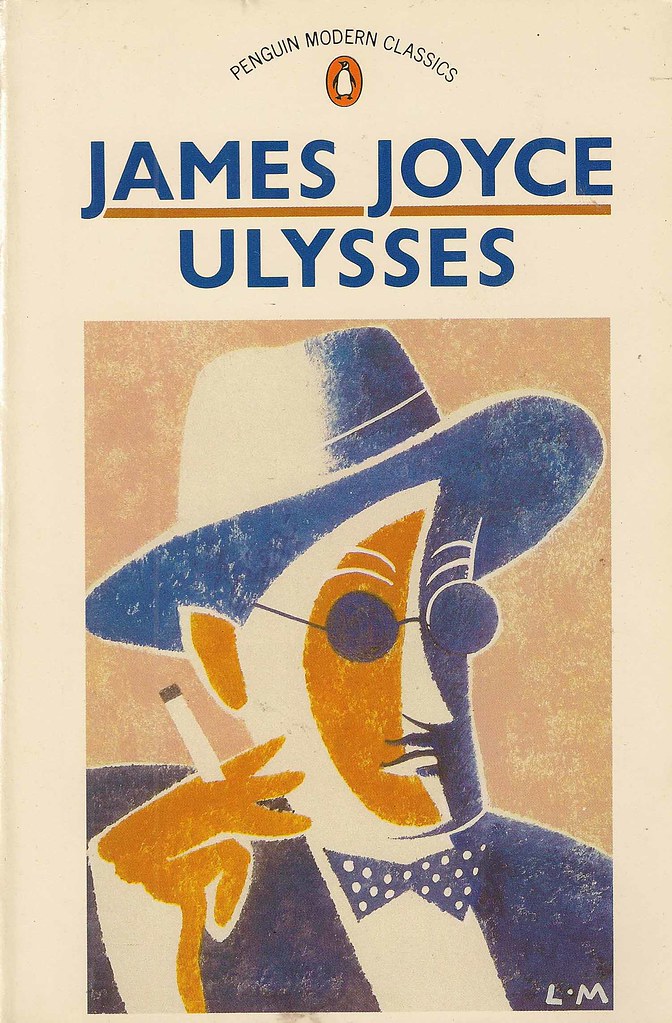| Last updated 7/5/2020. |
 |
UlyssesJames Joyce
|
|
First Publication: February 2, 1922 Category: modernist novel Sales: 880,000 |
Accolades (click on badges to see full lists): |
|
About the Book: Modern Library ranks Ulysses as the best novel of the 20th century while Time magazine calls it the 20th century’s most influential novel. EW It is considered “a must read for fans of the Modernist genre.” AZ It has, however, also earned a reputation as one of the most difficult novels to read. An unscientific study done in 2014 concluded that less than 2% of people who buy the novel actually read it in its entirety. EW The book is “filled with experimental forms of prose, stream of consciousness, puns, parodies, and allusions that Joyce himself hoped would ‘keep the professors busy for centuries arguing over what I meant.’” AZ “Its stream-of-consciousness narration deters many, but makes enraptured enthusiasts of others.” TG While the novel may initially appear unstructured, it closely parallels Homer’s ancient Greek poem, The Odyssey in which the protagonist, Odysseus “(Roman name: Ulysses) encounters many perils – including giants, angry gods, and monsters–during his voyage home to Ithaca, Greece, after the Trojan War.” CSG Ulysses contains “containing eighteen episodes that correspond to various parts of Homer’s work,” AZ although Homer “presented the journey of life as a heroic adventure” CSG while Joyce depicts it as “humdrum, dreary, and uneventful.” CSG Ulysses chronicles the events of a single day in Dublin, Ireland – June 16, 1904. The book is structured in three sections. Section 1 (chapters 1-3) focuss on Stephen Dedalus, a young, aspring writer seeking a father figure to replace his drunken dad. This parallels Telemachus’s search for his father Odysseus in The Odssey. CSG Dedalus “has just returned from Paris. This section presents Stephen's life on a typical day in which he finds Dublin depressing. He is pessimistic about realizing his dream to become a published author.” CSG Section 2 (chapters 4-15) focus on Leopold Bloom, a Jewish advertising representative of Hungarian origin who lives in Dublin. His character parallels Odysseus in The Odssey. For example, Odysseus visits the underworld, or the land of the undead, known as Hades, while Bloom attends a funeral in the chapter entitled “Hades.” Bloom’s “adventures” aren’t adventurous at all, but the mundane everyday tasks “of getting breakfast, feeding his cat, …doing legwork for his job, visiting pubs or restaurants, and thinking about his unfaithful wife.” CSG Bloom and Dublin are described in detail via “free-flowing thoughts – many of them either about his unfaithful wife, Molly, or other women.” CSG Molly is presented as a contrast to Penelope, the faithful wife of Odysseus. CSG Section 3 (chapters 16-18) focusses on Stephen, Leopold, and Molly. “Bloom and Dedalus meet each other. Dedalus goes to Bloom’s home and talks with him for several hours. The novel ends with a chapter on Molly…[which] consists of more than 30 pages occupied by seven sentences with no punctuation except for the period at the end of the novel.” CSG In 1918, extracts from the book were published in The Little Review in the United States. The publishers were fined and charged with obscenity BN “for its depiction of female masturbation.” TG It wasn’t published in book form until 1922 when American Sylvia Beach published it in Paris. It wasn’t until 1934 that the book was legally published in an English-speaking country “when Random House successfully defended Joyce against obscenity charges and published it in the Modern Library.” BN Resources and Related Links:
|
| In July 2018, I became the organizer of the Classic Novels Book Club. Check out the Book Club tab here or Meetup for more information. This is our June 2019 book. |












